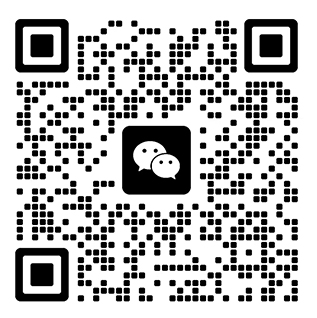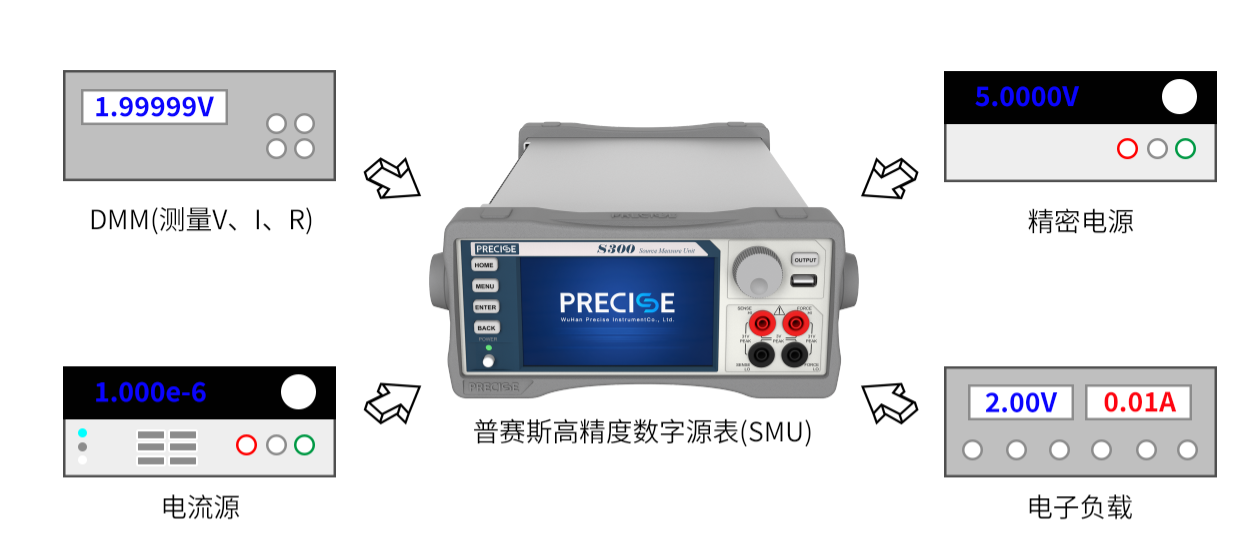
transducers
Specialized in semiconductor electrical testing
summarize
A gas sensor is a device that converts certain information about a gas, including concentration and species, into acoustic, electrical, optical or digital information that can be utilized by operators, instrumentation, computers, etc. It is usually installed in a monitoring system within the probe head of the monitoring system and is used for on-site collection of air data. Gas sensors can be categorized into semiconductor, solid electrolyte, electrochemical, contact combustion, optical, and thermal conductivity types based on their gas-sensitive properties.
Among them, the semiconductor gas sensor is a device that utilizes the adsorption of gases to change the conductivity of the semiconductor itself as a mechanism for detection, featuring high sensitivity, fast response, good stability, and simplicity of use, and is widely used in smart home, automotive electronics, consumer electronics, wearable devices, medical care, industrial processes, and environmental monitoring industries.
Semiconductor gas sensors span a wide range of resistance values covering the Ω~GΩ range depending on the material. Sorting gas sensors for different materials requires an efficient detection scheme.
Gas Sensor Electrical Performance Testing with Digital Source-Meter-User (SMU) Equipment
I-V testing involves applying a voltage or current to a device under test (DUT) and then testing its response to the excitation. Depending on the device under test (DUT), the signal level can be quite low, requiring highly sensitive sources and measuring instruments and test techniques to minimize external sources of error, and fast test speeds and high test reliability.
Typically, gas sensor I-V characterization requires several instruments, such as digital meters, voltage sources, current sources, etc. However, systems consisting of several instruments need to be programmed, synchronized, connected, and analyzed separately. However, a system consisting of several instruments needs to be programmed, synchronized, connected, measured and analyzed separately, which is a complex and time-consuming process and takes up too much space in the test bench. Furthermore, the use of single-function test instruments and excitation sources has the disadvantage of complex inter-trigger operations, greater uncertainty and slower bus transfer speeds.
One of the best tools for performing I-V characterization is a digital source meter (SMU). The SMU serves as a stand-alone constant voltage or constant current source, voltmeter, ammeter, and ohmmeter, and can also be used as a precision electronic load. Its high-performance architecture also allows it to be used as a pulse generator, waveform generator, and automated current-voltage (I-V) characterization system that supports four-quadrant operation.
Prosser Digital Source Meter (SMU) Solutions
Since 2015, Purcells has been committed to the research of digital source meters, and took the lead in realizing the localization of digital source meters in 2019, and successively launched high-precision digital source meters, plug-in source meters and other products, which, through the combination of different technologies, can realize the diversification and optimization of the product portfolio solutions to meet the needs of different customers from the cost to the performance, and help the users to easily solve the problems and needs encountered in the testing of gas sensors. Various problems and needs, such as:
(1) Real-time testing of the response sensitivity of multiple materials to resistive values under the same gas conditions;
(2) Resistance measurements in the lower high range span (Ω, KΩ, MΩ, GΩ) at low voltage, with high input resistance requirements for the test equipment.
(3) I/V curve scanning;
(4) The upper computer displays the R/t curves of different gas-sensitive resistors in real time, and can be recorded and archived;
Solution 1: S series high-precision digital source meter + host computer software, build a multi-channel test program
S100 Digital Source Meter is a high precision, large dynamic range and the first localized source meter built by Purcells over many years, integrating the functions of voltage and current input/output and measurement. The voltage range is from 300uV~30V, the current from 100pA~1A, the output accuracy reaches 0.1%, and the maximum power is up to 30W, which is able to cover the measurement of sensors with resistance values between 0~50GΩ.
Scheme 2: CS1010C + CS100/CS400 plug-in source meter + host computer software, build a multi-channel test program
The program mainly adopts Purcell plug-in devices (CS1010 host + CS100 daughter card or CS1010 host + CS400 daughter card) to form a multi-channel test program, which features high channel density, strong synchronous triggering function, and high efficiency of multi-device combination.
CS1010C Mainframe: Adopting customized frame, the backplane bus bandwidth is up to 3Gbps, supporting 16 trigger buses to meet the needs of high speed rate communication of multi-card devices, with slots that accommodate up to 10 word cards;
CS100 daughter card: a single card single-channel daughter card, with four-quadrant capability, the maximum voltage of 30V, the minimum current of 100pA, the output accuracy of 0.1%, the maximum power of 30W; with the CS1010 host up to 10 test channels can be built to cover the resistance value of the sensor measurements between 0 ~ 50GΩ;
CS400 daughter card: for a single card four-channel word card, the card 4-channel common ground, the maximum voltage of 10V, the minimum current of 10nA, the output accuracy of 0.1%, the maximum power of a single channel of 2W; with the CS1010 host up to 40 test channels can be built to cover the resistance value of the sensor measurements between 0 ~ 25MΩ;
Scheme 3: CS1010 + A400 acquisition card + S100/CS100 + host computer software, build multi-channel test program
The program mainly consists of 1 CS1010 host, N A400 acquisition card, 1 S100 or 1 CS100 daughter card, A400 to collect the voltage value of the two ends of the precision resistor (R1), all the test channels are connected in parallel by the S100/CS100 unified power supply.
A400 Data Acquisition Card: Plug-in card designed and developed independently by Purcells, supporting variable rate sampling and high precision data acquisition card with large capacity data storage; using high-performance ADC chip, resolution up to 16bits, maximum support for 2MS/s sampling rate, input impedance up to 1GΩ. 4 channels supported by a single acquisition card, and the isolation of the channels; with the host of the CS1010 up to 40 test channels can be constructed. The range of test resistance depends on the size of the precision resistor.
Frequently Asked Questions FAQ
(1) Is it necessary to use the 4-wire wiring method for testing?
This is generally not necessary. Gas-sensitive resistors were developed by screening out the most sensitive materials to gases and studying their characteristics. The resistance of gas-sensitive resistors is much greater than wire resistance, so the four-wire wiring method is not necessary.
(2) Can a multimeter be used to test gas-sensitive resistors?
Multimeters are generally only suitable for static testing to determine the resistance, for large range and large dynamic R&D, digital source meters are the best choice. The high-precision source meter independently developed by Purcell has the advantages of large dynamic range and high input impedance, which can cover the testing needs of gas sensors with different resistance ranges from Ω to GΩ.
(3) What is the advantage of a source meter over a resistance meter?
Common resistance meter, its advantage in is high precision and high sensitivity, but its testing principle and the source of the same meter, providing a constant current source to measure the voltage converted resistance value. The constant current source of the resistance meter is fixed at a number of levels, not as flexible and convenient as the constant current source of the Purcells source table is linearly adjustable.
(4) What are the features of the multichannel R/t test upscaling software?
Support ≤ 40 channels synchronous real-time drawing R / t characteristic curve; support constant current source or constant voltage source custom linear output mode switching; resistance value range dynamic automatic change; with timed scanning and continuous test function; test frequency according to the NPLC numerical value can be adjusted; but also has adjustable multi-point data smoothing R / t curve switching; support for test data export; support for Ethernet, RS-232, GPIB fast connection communication features. Connecting communication and other characteristics.
reach a verdict
I-V Characterization simplifies the qualification of sensors for use in gas detection systems and analytical instruments in the early stages of sensor research. Whether it is for the development of new materials and technologies or the production testing of sensors, Purcell is a trusted partner in the application of I-V characterization to a wide range of sensors and the selection of optimal test equipment.
For a detailed system setup plan and test line connection guide, please contact us!
Contact Us
ABOUT US
Dedicated customer line:
13717737785
Business Negotiations:
18929381667
Contact Email:
fp@szwanbo.com
WeChat Customer Service:
Contact our technical support specialists
In order for us to serve you better, please leave your valuable information.
If you need to purchase a specific model, you can filter the product center to select the model and submit an inquiry, fill in the specific number of products, our account manager will immediately give you the most favorable wholesale price!
If you don't find a model you can leave a comment here and we'll do our best to find it for you!


 Comprehensive test and measurement service provider-Shenzhen Weike Electronic Technology Co.
Comprehensive test and measurement service provider-Shenzhen Weike Electronic Technology Co.

